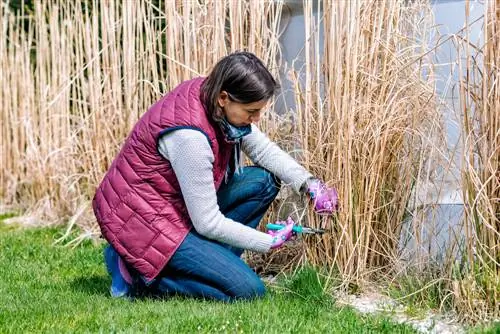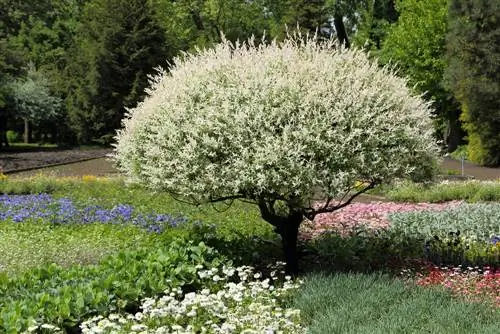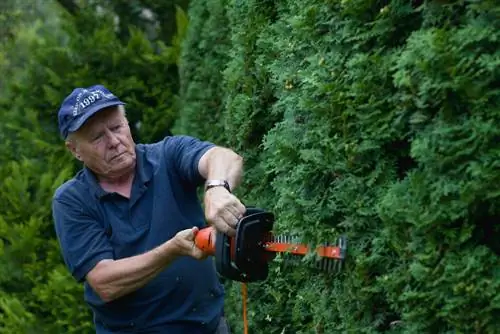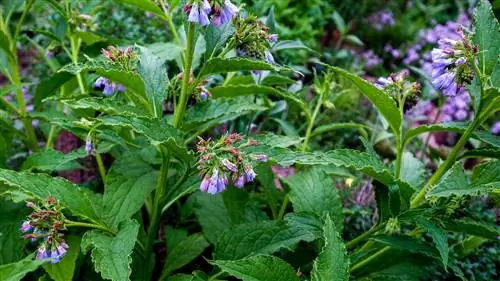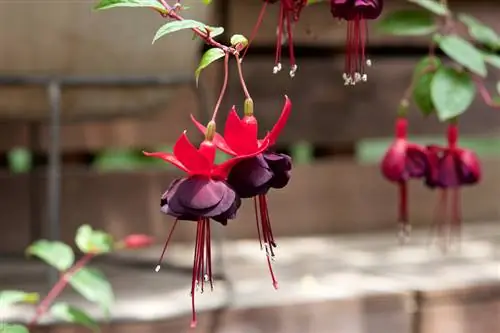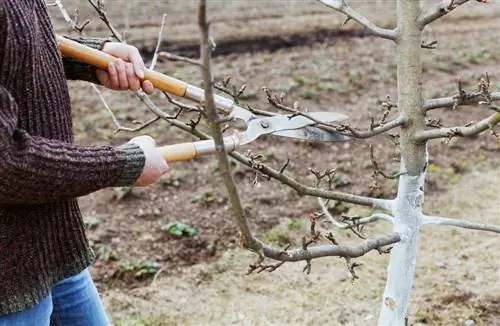- Author admin [email protected].
- Public 2023-12-16 16:46.
- Last modified 2025-01-23 11:22.
Miscanthus is generally considered to be quite easy to care for. In some gardens it spreads more than the owner would like. Even if pruning doesn't prevent this, you should use a garden knife every now and then.
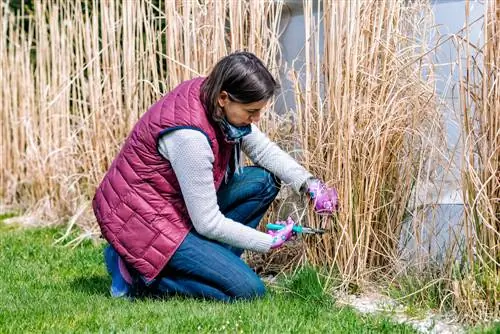
When and how should I cut miscanthus?
Miscanthus should ideally be cut in spring between the end of winter and the emergence of new stalks. Use sturdy, clean and well-sharpened secateurs, carefully cut off old stalks and be sure to wear gardening gloves for protection.
When should I cut my miscanthus?
The ideal time for cutting miscanthus is the time between the end of winter and the first shoots of new stalks, i.e. in spring. This time usually comes in April, as Miscanthus sprouts relatively late.
Why shouldn't I cut miscanthus in autumn?
There are two reasons why you shouldn't cut back miscanthus in the fall. On the one hand, the reeds can be damaged, and on the other hand, you miss the decorative sight of the frosted Chinese reeds in winter. If you live in a snowy area, you can tie the leaves and stalks together to protect them from snow breakage.
Pruning in autumn is particularly dangerous if it rains for a long time, as rainwater can penetrate the hollow stalks. As a result, the reeds begin to rot easily. If you don't notice this in time, the rot can spread to the roots.
Are there any special features when cutting miscanthus?
The stalks and leaves of the Miscanthus are relatively hard, so you need sturdy pruning shears (€17.00 on Amazon) for pruning, preferably one with a lot of leverage. Of course, the scissors should also be clean and well sharpened.
If you have missed the ideal time for pruning, then go to work with particular caution. Cut off the old stalks individually from the outside inwards without damaging the young, freshly grown shoots. If the young shoots are still relatively short, you can alternatively cut off the old stalks in clumps above the young stalks.
Do I have to wear gloves when cutting?
The leaves of miscanthus are very sharp and can cause painful cuts on the skin. In addition, the plant sap that comes out when cutting can trigger an allergic skin reaction in sensitive people. Therefore, you should definitely wear gardening gloves when pruning.
Can I also prune the roots?
In principle, you can also trim the roots of all types of miscanthus to prevent the reed from spreading uncontrollably in the garden. However, since these can grow very deep into the ground, a lot of work is involved. If you want to avoid the reeds spreading over large areas, it is better to use a root barrier when planting.
The most important things in brief:
- be sure to wear gardening gloves
- Pruning is best done in spring
- maybe think about dividing the plant straight away
- do not shorten fresh shoots
Tip
If you are currently pruning, you can also divide your miscanthus if necessary.

